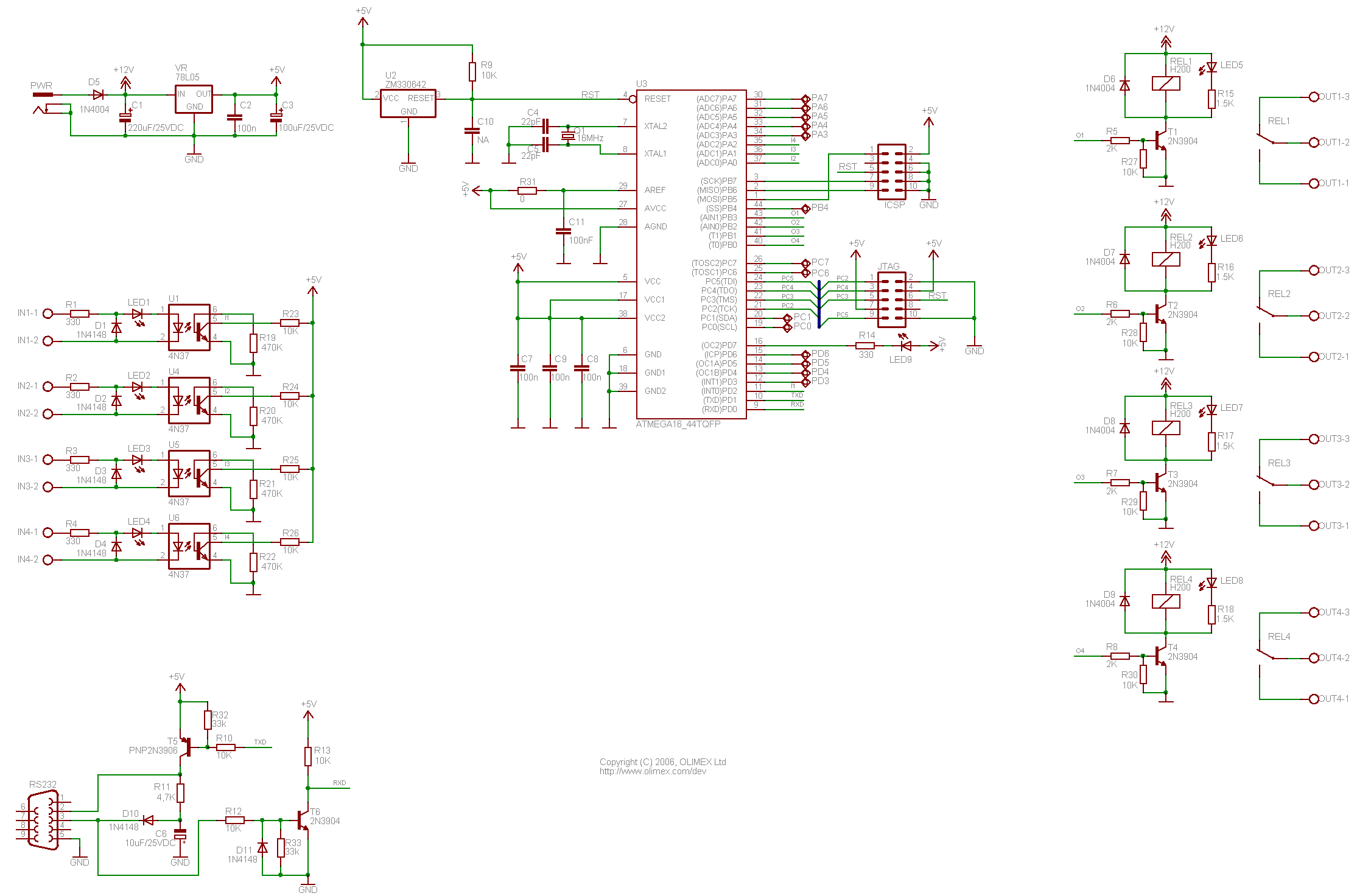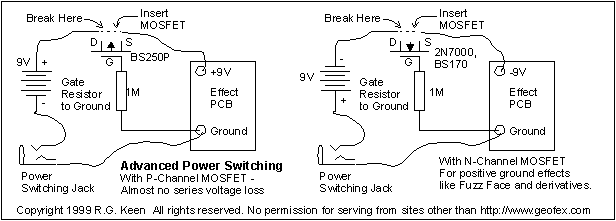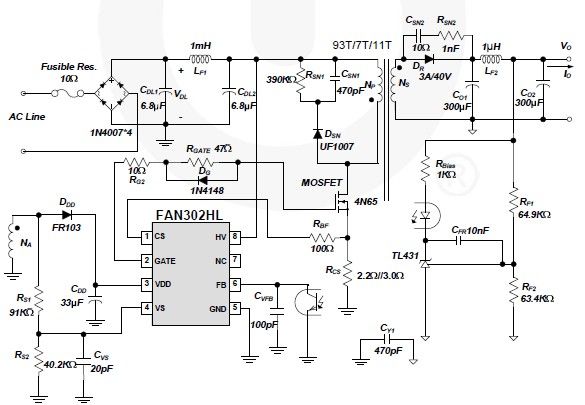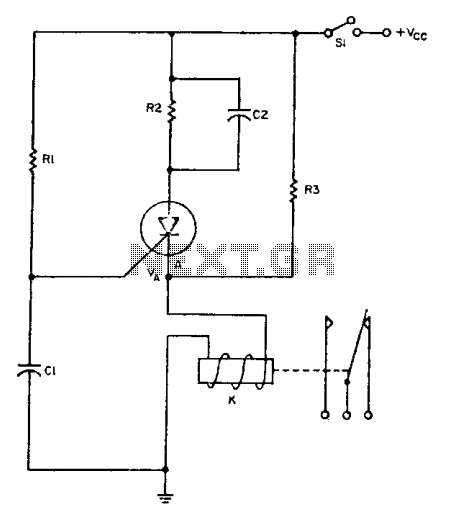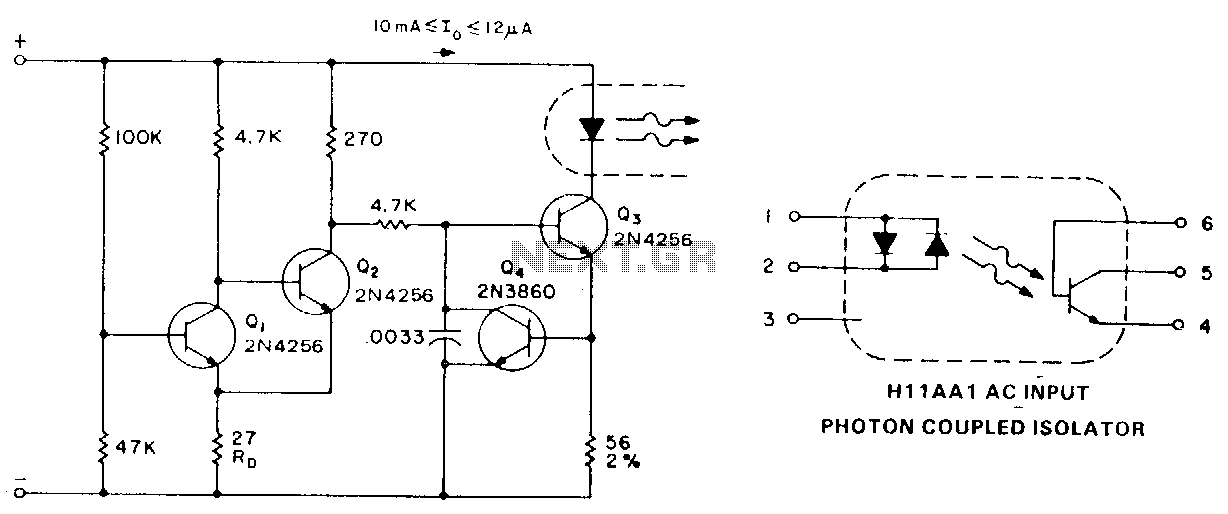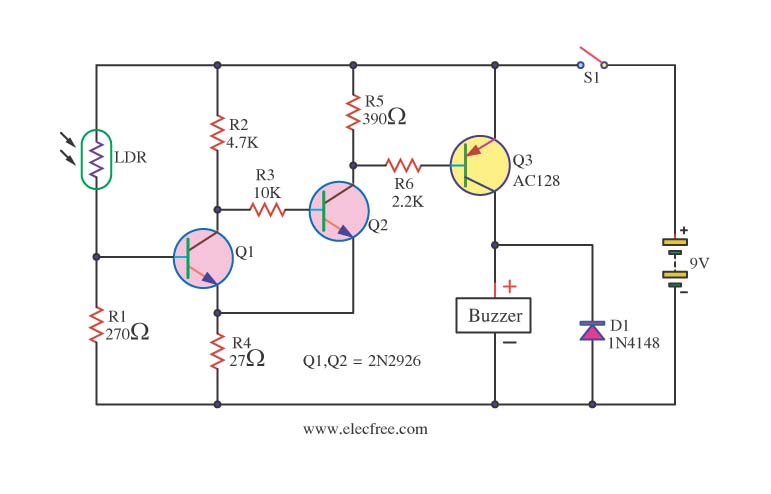
water liquid level sensor relay switch
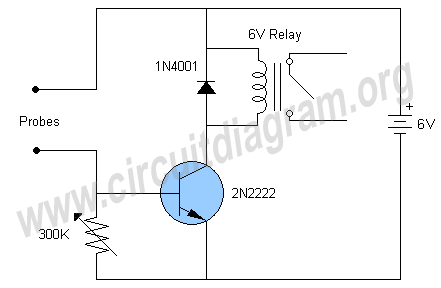
This schematic represents a simple water or liquid level sensor relay switch circuit, designed to control electronic appliances based on water levels. The circuit is particularly useful for automatically turning off a water pump when a water tank, pool, or aquarium reaches a predetermined level. It is straightforward to construct and requires only a few components. The NPN transistor 2N2222 functions as a switch; when the two probes in the circuit detect water, the transistor activates, thereby energizing a six-volt relay. For operation at 12 volts, a 12-volt relay should be utilized.
The water level sensor relay switch circuit is an efficient solution for managing liquid levels in various applications, such as aquariums, water tanks, and swimming pools. The design primarily consists of a water level sensing mechanism, an NPN transistor (2N2222), a relay, and the necessary resistors for biasing the transistor.
The two probes, typically made of conductive material, are positioned at specific heights within the tank or container. When the water level rises to the height of the probes, the water acts as a conductive medium, completing the circuit between the probes. This causes a small current to flow, which is sufficient to bias the base of the 2N2222 transistor, turning it on.
Once the transistor is turned on, it allows a larger current to flow from the collector to the emitter, activating the relay. The relay, in turn, can control a higher voltage circuit, such as a water pump, enabling it to switch off automatically when the water level reaches the desired point. The relay used in this circuit can be rated for either six volts or twelve volts, depending on the power supply available for the application.
To ensure the reliability of the circuit, it is important to include appropriate resistors to limit the current flowing into the base of the transistor, preventing damage and ensuring proper operation. Additionally, a flyback diode should be connected across the relay coil to protect the transistor from voltage spikes generated when the relay is deactivated.
This circuit exemplifies a practical application of basic electronic components in automating water level control, contributing to energy efficiency and enhancing safety in environments where water levels need to be monitored and controlled.Here is a schematic of a simple water or liquid level sensor relay switch circuit, which can be used to switch on or off electronic appliances at the desired level of water. The circuit is ideal for automatically switch off the water pump when your water tank, pool or aquarium is filled.
The circuit is very easy to build and contains only few part s. The NPN transistor 2N2222 is working as a switch, when the two probes shown in the circuit will detect water the transistor become switch on and activates the six volts relay For operating the circuit with 12 volts use a 12 volt relay. 🔗 External reference
The water level sensor relay switch circuit is an efficient solution for managing liquid levels in various applications, such as aquariums, water tanks, and swimming pools. The design primarily consists of a water level sensing mechanism, an NPN transistor (2N2222), a relay, and the necessary resistors for biasing the transistor.
The two probes, typically made of conductive material, are positioned at specific heights within the tank or container. When the water level rises to the height of the probes, the water acts as a conductive medium, completing the circuit between the probes. This causes a small current to flow, which is sufficient to bias the base of the 2N2222 transistor, turning it on.
Once the transistor is turned on, it allows a larger current to flow from the collector to the emitter, activating the relay. The relay, in turn, can control a higher voltage circuit, such as a water pump, enabling it to switch off automatically when the water level reaches the desired point. The relay used in this circuit can be rated for either six volts or twelve volts, depending on the power supply available for the application.
To ensure the reliability of the circuit, it is important to include appropriate resistors to limit the current flowing into the base of the transistor, preventing damage and ensuring proper operation. Additionally, a flyback diode should be connected across the relay coil to protect the transistor from voltage spikes generated when the relay is deactivated.
This circuit exemplifies a practical application of basic electronic components in automating water level control, contributing to energy efficiency and enhancing safety in environments where water levels need to be monitored and controlled.Here is a schematic of a simple water or liquid level sensor relay switch circuit, which can be used to switch on or off electronic appliances at the desired level of water. The circuit is ideal for automatically switch off the water pump when your water tank, pool or aquarium is filled.
The circuit is very easy to build and contains only few part s. The NPN transistor 2N2222 is working as a switch, when the two probes shown in the circuit will detect water the transistor become switch on and activates the six volts relay For operating the circuit with 12 volts use a 12 volt relay. 🔗 External reference
